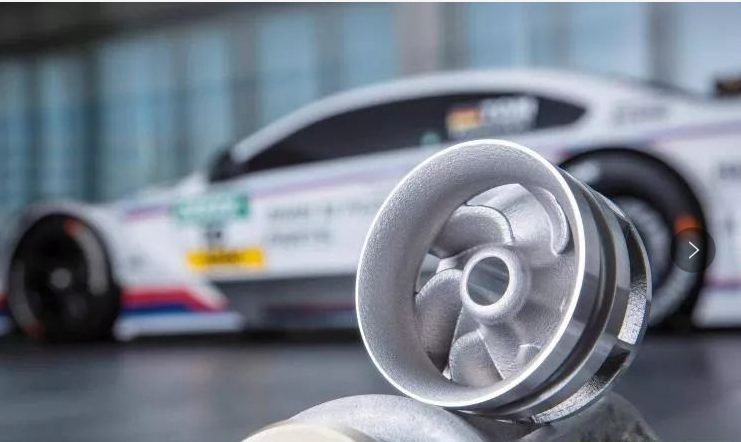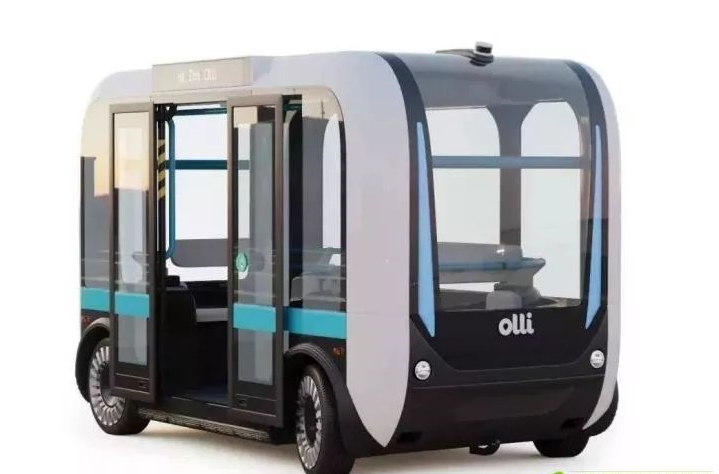The change is still far away! Rational view of automotive 3D printing technology
There is such a noun, it is often referred to as the "subversion", "change" aura; there is such a technology, although it has been published for more than 20 years, but in recent years only penetrated into the automotive, medical, consumer goods and other fields, it It is 3D printing.
A few years ago, the British "Economist" magazine once labeled 3D printing as the "third industrial revolution." And because it can combine the digital world with real production, it has been widely used in the automotive industry in recent years. However, with the increasing depth of automotive technology, is 3D printing really the key to catalyzing change in the current transformation of automotive manufacturing?
What is 3D printing?
In fact, 3D printing is not a brand new thing. As early as the 1990s, 3D printing was introduced, similar to the principle of ordinary printers, except that the "ink" of 3D printers is metal, ceramics, plastics and other materials. In layman's terms, 3D printing is a technique in which a computer is used to model an object by printing a printed material at a very thin thickness by layer-by-layer printing.
The advantages of 3D printing are faster molding speeds, lower manufacturing costs and higher precision. With 3D printing technology, conceptual models can be produced in hours or days. In addition, due to the nature of its layer stacking, it is also its strength to produce parts that are complex in shape, small in size, and difficult to manufacture. Moreover, through the selection of materials and structural optimization, the advantages of lightweighting 3D printing products are more prominent, and thus it is widely used in the aviation field.
So what do these characteristics mean for cars? The development of auto parts often requires long-term research and development, mold opening, testing and other rounds. And 3D printing first reduces the mold opening process in the development of complex parts, greatly reducing the cost of automobile manufacturing and shortening the development cycle. Even if something goes wrong, you can modify the design file at any time without having to reinvent it.
In addition, in the era of personalization, 3D printing also provides the possibility for people to customize their favorite auto parts, and its lightweight properties are more suitable for electric vehicles. It can be said that 3D printing promotes the innovative ability of automobile manufacturing.
3D printing is in the ascendant in the automotive industry
3D printing cars represented by Strati and Urbee were the first to receive widespread public attention, but such products are more likely to be displayed, not 100% 3D printing of all parts.
In fact, BMW has long incorporated 3D printed parts into the concept car R&D system. In the past 10 years, BMW has used 3D printing technology to produce 1 million parts. Even BMW has invested in 3D printing technology companies such as Carbon and Desktop Metal.
In May 2018, when BMW announced that it would invest more than 10 million euros (about 77.138 million yuan) in Germany to establish a new additive manufacturing (3D printing) R&D and production center, GM also announced almost 3D software at the same time. Expert Autodesk collaborates to create 3D printed parts for new cars. GM hopes to add 20 new alternative energy vehicles to its product line by 2023 and mass production of thousands or even tens of thousands of parts through 3D printing.
But in fact, many car companies including Mercedes-Benz, Honda, Ford, Volkswagen and Chinese car brand Geely have actively explored around 3D printing. It is said that Volkswagen's factory already has dozens of 3D printers for the production of complex parts or prototypes.
In fact, the reason why car companies are so active in embracing 3D printing technology is still inseparable from the advantages of cost reduction, cycle shortening, personalized customization, and lightweight. For example, BMW's new MINI Yours custom-made product range, such as side scuttles and interior trims, can be individually designed and produced in 3D printing. GM's 3D printed stainless steel seat is 40% lighter than conventional, 20% stronger, and requires only one component, while in the past it required eight components from multiple suppliers.

In addition, according to the "Global 3D Printing Automotive Market Analysis and Development Trends - Industry Forecast for 2025", the application of 3D printing equipment will increase by 10% by 2025, and most of the equipment will be used for the manufacture of cars and truck parts. According to a survey released by well-known market consultancy Frost & Sullivan, the market size of automotive 3D printing in 2025 is expected to reach US$4.3 billion (approximately RMB 29.18 billion).
Therefore, the advantages of 3D printing technology itself and the future business prospects have brought a broad imagination to the automotive industry.
3D printing still exists in the automotive industry桎梏
Although 3D printing is gradually moving towards the consumer market, the aviation and military industries are still concentrated applications. Both aviation and military are small-volume, customized production models, which is precisely the characteristics of 3D printing technology suitable for small batch, personalized, lightweight production.
But in terms of the automotive industry, objectively speaking, 3D printing applications are not a natural strength in the automotive field.
In the automotive sector, one of the reasons for limiting the large-scale application of 3D printing is cost. The method of producing parts by traditional mold opening can achieve “scale reduction”. Although the cost of mold opening is very high, the cost of each component is relatively high in small batch production, but the cost reduction advantage is reflected in mass production. 3D printing does not have the effect of scale reduction, but the smaller the batch, the more economical, and for products such as cars with an annual output of hundreds of thousands of units, 3D printing has no cost advantage.
Zhang Kangkang, co-founder of Beijing Amethyst Cube Technology Co., Ltd., believes that “at this stage, the manufacturing cost of 3D printing is still very high. Currently, 3D printing is mainly used in the automotive industry for low-cost, low-volume production. In the high-end luxury car.” For example, the BMW Group has used more than 10,000 3D printed parts in its new Rolls-Royce Phantom.
According to Zhang Kangkang, when the OEM used 3D printing technology, it actually “stepped on” the critical point of cost reduction. “Taking the 3D printing cooperation reached by BMW and Hewlett-Packard as an example, when the output is lower than a certain value, the adoption is adopted. 3D printing technology, and when the annual output exceeds this value, the traditional manufacturing mode will be adopted."
In addition to the cost factor, there is another issue that deserves attention. In the life span of a car for more than a decade, you need to deal with a variety of complex driving scenarios, including bumps, collisions and so on. Some 3D printed parts do not meet the requirements of the car level in terms of strength and durability. In particular, the key components such as the chassis still need to rely on traditional manufacturing processes.
Moreover, although many car companies have launched a positive layout for 3D printing, there are still few implementations that are actually implemented. Guo Zhifu, general manager of Shanghai Linli Industrial Development Co., Ltd., said that “At present, auto OEMs are still using 3D printing technology for R&D testing, and even many large automakers in China are still unfamiliar with 3D printing. In the process of investigating the car companies, a senior engineer at a large OEM has not yet realized that 3D printing can dry up."
Drive the revolution in car manufacturing? "Strength" is still insufficient
The Economist has pushed 3D printing technology to the apex of public opinion. Especially in recent years, with the appearance of 3D printing cars, and the well-known car companies such as Mercedes-Benz and BMW, the action of embracing 3D printing is accelerating. It seems that 3D printing is fierce.
But does the 3D printing technology, which combines many advantages, really achieve a beautiful vision of "the car is getting cheaper," "what do you want?" and "buy a car for minutes". Especially in the era of smart cars that emphasize personalized experiences, can 3D printing lead a revolution in car manufacturing?
As can be seen from the advantages of 3D printing technology, it has achieved a new balance in the production cycle, cost and personalization, and released the imagination to a greater extent, which can be said to be a major change in manufacturing thinking. However, in the field of industrial manufacturing, the advantages of large-volume, low-cost traditional manufacturing modes are not available in 3D printing. This also determines that 3D printing is a supplement and innovation to traditional manufacturing, and it can't reach the height of “changing the automobile manufacturing model” because it cannot replace large-scale standardized production at this stage.
In Zhang Kang's view, although 3D printing seems to penetrate into the automotive field faster and faster, there is still a big gap from mass production. Looking at it now, 3D printing accounts for only one in ten thousand of the entire manufacturing industry. 3D printing can only be said to improve the manufacturing process and improve the efficiency of certain links, but at this stage it is not a "revolution."
Guo Zhifu also has a similar view on this. He believes that 3D printing will not become the leader of “Industry 4.0” or “Made in China 2025”, let alone lead the industry change. The biggest possibility is to make a big change in several specific industries, and at the same time infiltrate into all walks of life, adding to the original industry, "the future must be 'an industry + 3D printing', rather than '3D printing + an industry '."
Summary of the full text: 3D printing is not a completely new technology, although it can optimize the traditional manufacturing process, but it can not replace the traditional manufacturing. We should maintain a rational attitude and calm thinking about such things. After all, the automotive industry is already too impetuous.

